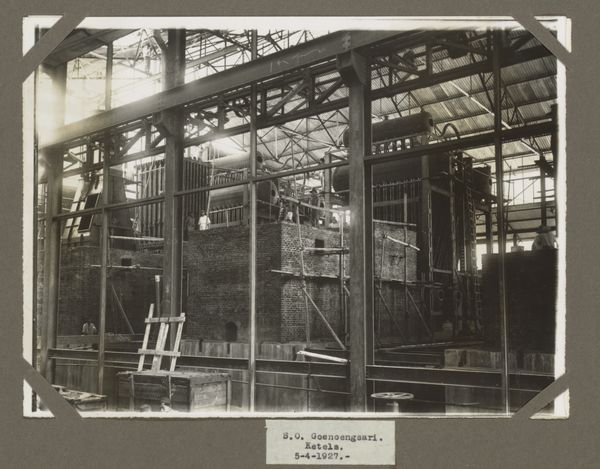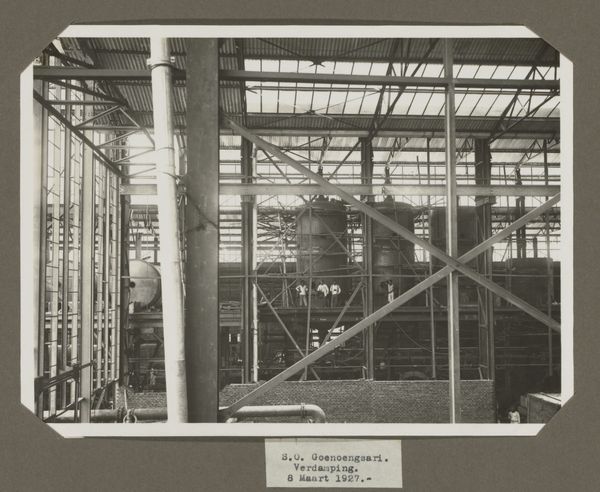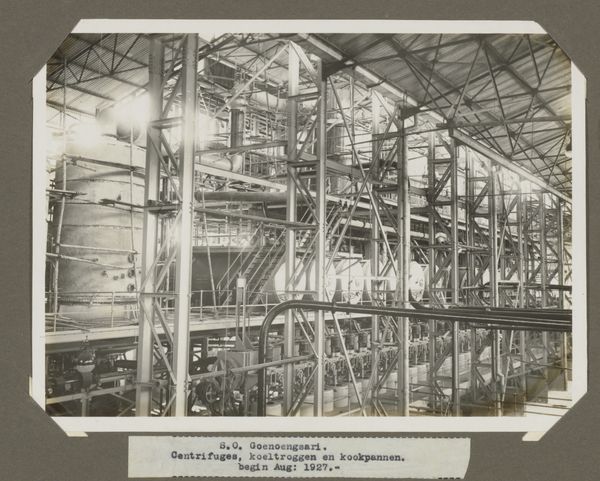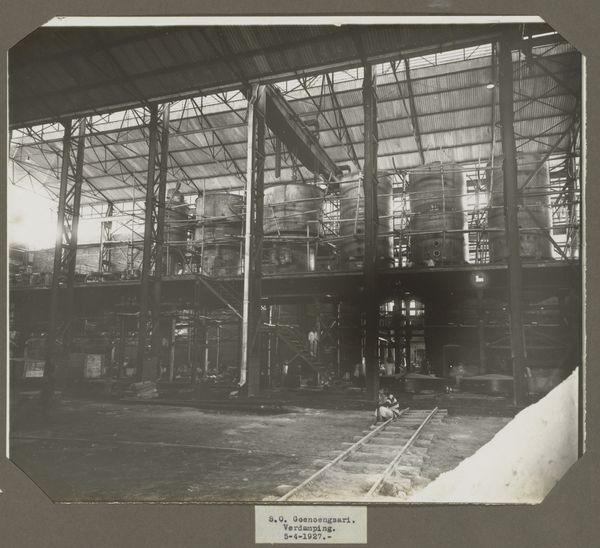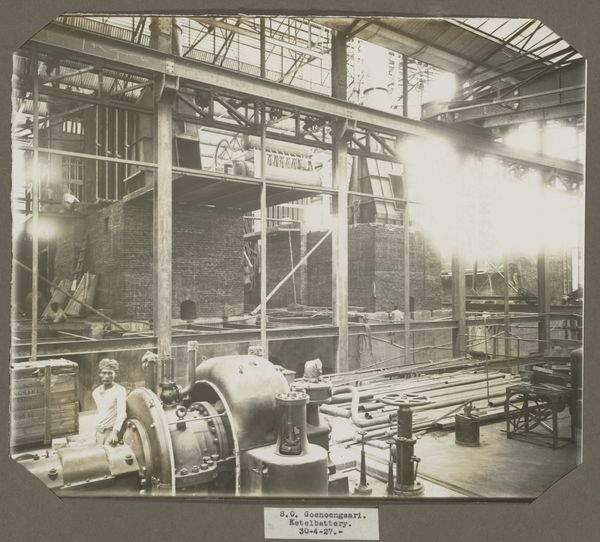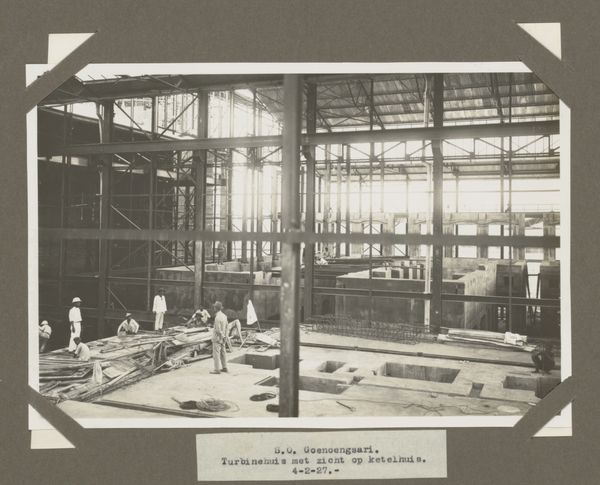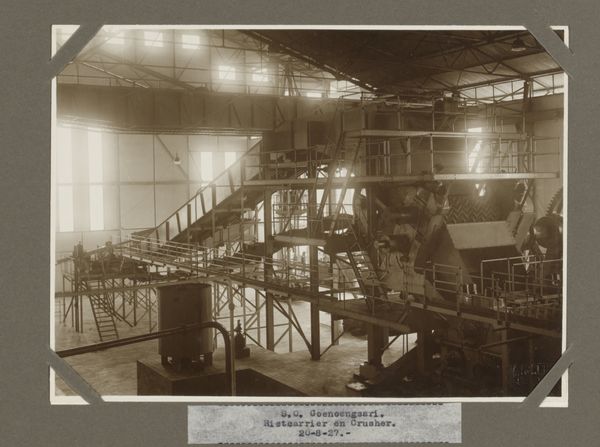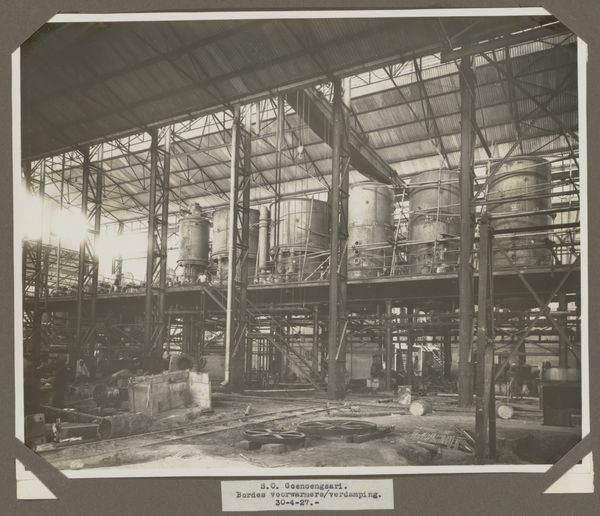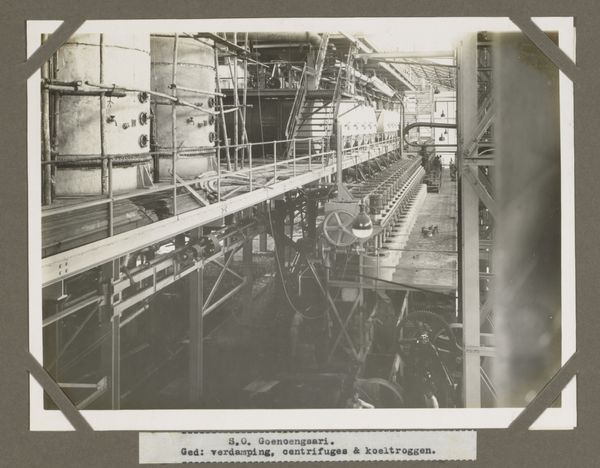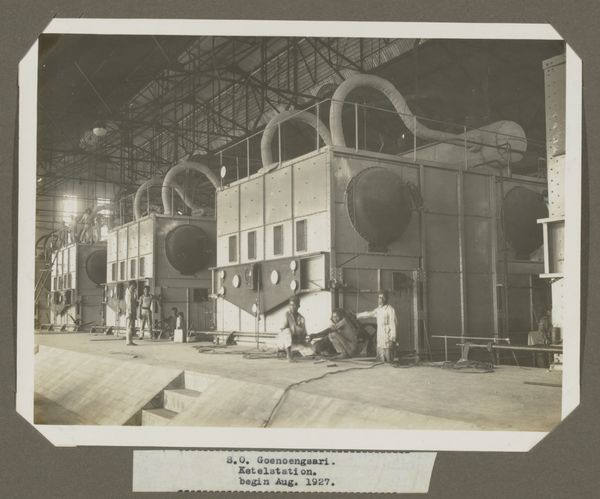
photography
#
faded colour hue
#
aged paper
#
desaturated
#
reduced colour palette
#
desaturated colours
#
light coloured
#
archive photography
#
photography
#
desaturated colour
#
desaturated image
#
folded paper
#
realism
Dimensions: height 180 mm, width 244 mm
Copyright: Rijks Museum: Open Domain
Editor: Here we have a photograph titled 'S.O. Goenoengsari. Ketels. 5-4-1927' from 1927. It depicts the interior of what looks like a factory, complete with massive industrial boilers. There’s a definite stillness to it despite the subject. What strikes you most about this image? Curator: I see a powerful intersection of colonialism, industrialization, and labor captured in a single frame. This photograph, likely taken in the Dutch East Indies – now Indonesia – visualizes the raw machinery of resource extraction. What narratives do you think are intentionally – or unintentionally – present in its stark composition? Editor: I guess the human element feels… diminished. There are people visible, but they're dwarfed by the machinery, almost like they are just another cog in the machine. Is that something you see as intentional? Curator: Absolutely. This is not merely a photograph of boilers; it’s a visual representation of power dynamics. Note the date: 1927. Consider the context of Dutch colonial rule. The image subtly speaks to the exploitation of both natural resources and the Indonesian workforce. The composition reinforces the idea of humans being subjected to the demands of industry imposed by colonial structures. How does this context shift your understanding? Editor: It completely reframes it. It's not just a factory; it’s a monument to colonial ambition, with human cost etched into the details. The desaturated colors almost give it the feel of an official document – like it is meant to reinforce and normalize something deeply unjust. Curator: Precisely. This photograph invites us to question the seemingly neutral, objective nature of documentary images, pushing us to acknowledge the embedded politics of representation and remember those who are not centered in such visual histories. What stories might be missing entirely from this frame? Editor: This makes me think about the environmental impact, and of the generations that never made it into this or any picture at all. It definitely changes my reading of the photograph. Curator: Indeed. And that is the power of engaging with art through a critical lens; we unearth not only the seen but, crucially, the unseen narratives of history.
Comments
No comments
Be the first to comment and join the conversation on the ultimate creative platform.
